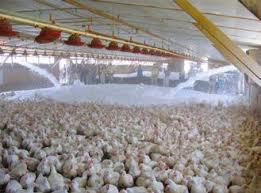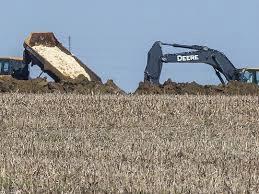 The 2022 epornitic of highly pathogenic avian influenza (HPAI) has revived questions concerning the procedures used to establish the quantum of loss and the policies applied to award compensation for mass depopulation of flocks and herds. The USDA-APHIS is now requesting comment on a new approach to determining indemnity to be paid to owners of flocks or herds depopulated as a result of infection with an exotic disease. The summary of the publication that appeared in the Federal Register notes differences among species and diseases. It is the intent of APHIS to determine values of livestock and costs associated with transportation, decontamination and disposal to calculate indemnity. The closing date for comments is November 7, 2022.
The 2022 epornitic of highly pathogenic avian influenza (HPAI) has revived questions concerning the procedures used to establish the quantum of loss and the policies applied to award compensation for mass depopulation of flocks and herds. The USDA-APHIS is now requesting comment on a new approach to determining indemnity to be paid to owners of flocks or herds depopulated as a result of infection with an exotic disease. The summary of the publication that appeared in the Federal Register notes differences among species and diseases. It is the intent of APHIS to determine values of livestock and costs associated with transportation, decontamination and disposal to calculate indemnity. The closing date for comments is November 7, 2022.
The USDA experienced difficulty in establishing values during the HPAI epornitic of 2014-2015 and problems that were not resolved emerged again in 2022. The outstanding restraint is establishing compensation using an in-person appraisal. Events in 2015 and again in 2022 clearly indicate the deficiencies associated with timely and complete appraisal of fair market value using this approach.
Based on policy with regard to compensation for diseases including Foot-and-Mouth disease, pleuropneumonia, HPAI, Newcastle disease, salmon anemia and other exotic diseases, the USDA-APHIS is considering alternatives. One approach will be to use a standardized indemnity value tabulated by species but subject to appeal under extraordinary circumstances. Values would be updated annually and would be published in the Federal Register.

USDA-APHIS is considering a consolidation of indemnity regulations that would harmonize how value is determined, including compensation for cleaning and disposal. With regard to poultry, diseases of significance would include any H5 or H7 strain of avian influenza irrespective of pathogenicity.
The USDA-APHIS is considering removing the cap on various animals of high, individual value. Previously, USDA-APHIS introduced minimal biosecurity requirements for poultry producers to be eligible for indemnity. This approach will be extended to other species. Post exposure biosecurity requirements are presently incorporated into regulations and specify action that the producer must take to be eligible for future indemnification.

With respect to economic considerations, APHIS is requesting comment on economic cost considerations that would accrue from adoption of new regulations. The problem with a predetermined table of values, especially for laying hens, is that in the event of an extensive outbreak of a catastrophic disease such as highly pathogenic avian influenza the value of healthy, laying hens increases sharply consistent with the market price of eggs. Adjusting for market realities will impose difficulties for USDA-APHIS. Flocks are depopulated to prevent multiplication and dissemination of virus. If this action were not taken, flocks exposed to HPAI would inevitably die and accordingly, at the time of infection, would effectively have no value.
It is hoped that producers will review the proposed changes to indemnity regulations and make appropriate comments through their respective industry associations. To date the USDA has dipped into the Commodity Credit Corporation endless piggy-bank to compensate producers. With the growing realization that HPAI is probably endemic in wild domestic bird species and given the duration of the 2022 epornitic Congress may soon balk at sub-billion dollar annual payments to the poultry industry, hence the preemptive attempt by USDA to develop new rules and values for flocks. If HPAI persists among commercial and even backyard flocks, vaccination and enhanced effective biosecurity will represent the foundation of control with extremely limited compensation offered by the USDA according to narrowly defined circumstances.